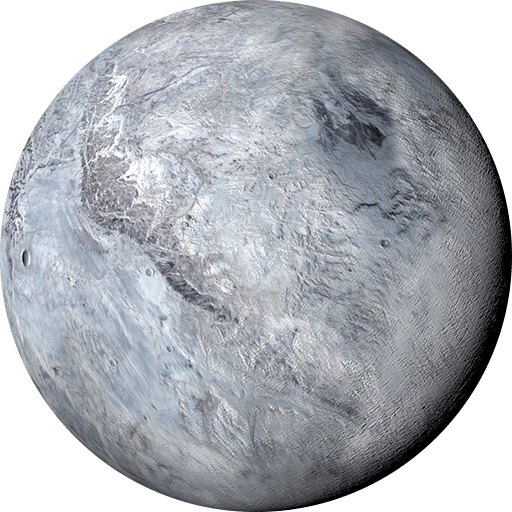- The Discovery of Eris: A New Dwarf Planet in our Solar System
- The Characteristics and Physical Features of Eris: What Makes It Unique?
- Eris and Pluto: The Debate Over Planetary Classification
- The Moons of Eris: What We Know So Far
- The Orbit of Eris: How It Affects the Kuiper Belt
- Eris and the Kuiper Belt: Implications for the Early Solar System
- Eris and its Relationship with other Dwarf Planets
- The Surface of Eris: Exploring the Unknown
- Eris and the Search for Life Beyond Earth
- Eris: A Window into the Outer Reaches of the Solar System
The Discovery of Eris: A New Dwarf Planet in our Solar System
The discovery of Eris marked a significant milestone in the field of astronomy. In 2005, a team of astronomers led by Mike Brown of the California Institute of Technology spotted a new object in the outer reaches of our solar system. At the time, the object was thought to be a tenth planet, but its classification soon became a topic of debate among scientists.
The discovery of Eris was made possible by the use of advanced telescopes and sophisticated imaging techniques. The team used the Samuel Oschin Telescope at the Palomar Observatory in California to take several images of the same area of the sky over a period of several nights. By comparing these images, they were able to identify Eris as a new object.
Eris is located in the Kuiper Belt, a region of our solar system that lies beyond the orbit of Neptune. It is approximately 68 astronomical units (AU) from the Sun, which is about three times the distance between Neptune and the Sun. Eris is also one of the largest known dwarf planets in our solar system, with a diameter of about 1,445 miles (2,326 kilometers).
The discovery of Eris raised questions about the classification of planets in our solar system. Prior to its discovery, Pluto was considered the ninth planet. However, Eris is larger than Pluto, leading some scientists to argue that Pluto should be reclassified as a dwarf planet, along with Eris and several other objects in the Kuiper Belt.
The Characteristics and Physical Features of Eris: What Makes It Unique?
Eris, a dwarf planet in the Kuiper Belt, has unique physical features that make it stand out among other celestial bodies in our solar system. Its most distinguishing feature is its size, which is larger than Pluto, the former ninth planet of our solar system. In this blog post, we will explore the characteristics and physical features that make Eris unique.
Eris has a diameter of approximately 1,445 miles (2,326 kilometers) and a mass that is 27% greater than Pluto. Its surface is covered in a layer of methane ice, which gives it a reddish-brown appearance. Eris also has a thin atmosphere composed primarily of nitrogen and methane, which is similar in composition to Pluto’s atmosphere.
Eris has one known moon, Dysnomia, which is relatively large compared to the size of Eris. Dysnomia has a diameter of approximately 342 miles (550 kilometers) and is thought to have been formed from the debris ejected during a collision between Eris and another object.
Another unique feature of Eris is its highly elongated orbit. It takes Eris approximately 557 Earth years to complete one orbit around the Sun, and its orbit is inclined at an angle of 44 degrees to the plane of the ecliptic, the plane in which most planets orbit the Sun. This highly elliptical orbit makes Eris the most distant known object in our solar system at its farthest point from the Sun.
Eris’s unique characteristics have sparked scientific interest in studying this dwarf planet in greater detail. In 2020, the European Space Agency (ESA) announced a mission to study Eris and other objects in the Kuiper Belt, called the Comet Interceptor mission. The mission aims to study the composition and physical characteristics of Eris, Dysnomia, and other objects in the Kuiper Belt to better understand the formation and evolution of our solar system.
Eris and Pluto: The Debate Over Planetary Classification
The classification of planets has been a topic of debate among astronomers for many years. In 2005, the discovery of Eris, a dwarf planet larger than Pluto, reignited this debate and led to the controversial decision to reclassify Pluto as a dwarf planet. In this blog post, we will explore the debate over planetary classification and the role that Eris played in it.
he classification of planets has been a topic of debate among astronomers for many years. In 2005, the discovery of Eris, a dwarf planet larger than Pluto, reignited this debate and led to the controversial decision to reclassify Pluto as a dwarf planet. In this blog post, we will explore the debate over planetary classification and the role that Eris played in it.
Before the discovery of Eris, Pluto was considered the ninth planet in our solar system. However, when Eris was discovered, it was found to be larger than Pluto and located in the same region of our solar system, known as the Kuiper Belt. This led to questions about whether Pluto should be reclassified as a dwarf planet, along with Eris and other objects in the Kuiper Belt.
The debate over planetary classification centers on the definition of a planet. The International Astronomical Union (IAU), the organization responsible for classifying celestial objects, defines a planet as a celestial body that orbits the Sun, is spherical in shape, and has cleared its orbit of other debris. According to this definition, Pluto did not qualify as a planet, since it had not cleared its orbit of other objects in the Kuiper Belt.
In 2006, the IAU decided to reclassify Pluto as a dwarf planet, along with Eris and other similar objects in the Kuiper Belt. This decision was met with controversy, with many people, including some astronomers, arguing that Pluto should still be considered a planet.
The controversy over planetary classification continues to this day, with some scientists proposing new definitions for planets that would include Pluto and other dwarf planets. However, the IAU definition remains the most widely accepted definition of a planet.
The Moons of Eris: What We Know So Far
Eris, the dwarf planet located in the Kuiper Belt, has one known moon named Dysnomia. Dysnomia was discovered in 2005, the same year that Eris was discovered, and is believed to have been formed from the debris ejected during a collision between Eris and another object. In this blog post, we will explore what we know so far about the moons of Eris.
Dysnomia, Eris’s only known moon, has a diameter of approximately 342 miles (550 kilometers) and orbits Eris at a distance of approximately 37,300 miles (60,000 kilometers). Dysnomia’s orbit around Eris is highly elliptical, taking approximately 16 days to complete one orbit.
Little is known about Dysnomia’s physical characteristics, as it has not been studied in detail. However, it is believed to be composed primarily of rock and water ice. Dysnomia’s surface is also thought to be covered in a layer of fine dust and small rocks.
The discovery of Dysnomia has raised questions about how a moon could form around a dwarf planet like Eris. Some theories suggest that Dysnomia was formed from debris ejected during a collision between Eris and another object. Other theories suggest that Dysnomia was captured by Eris’s gravity.
More research and exploration of Eris and its moon, Dysnomia, is needed to better understand their physical characteristics and how they formed. In 2020, the European Space Agency (ESA) announced a mission to study Eris and other objects in the Kuiper Belt, called the Comet Interceptor mission. The mission aims to study the composition and physical characteristics of Eris, Dysnomia, and other objects in the Kuiper Belt to better understand the formation and evolution of our solar system.
The Orbit of Eris: How It Affects the Kuiper Belt
Eris, the dwarf planet located in the Kuiper Belt, has an unusual orbit that affects the gravitational dynamics of the objects in its vicinity. In this blog post, we will explore how the orbit of Eris affects the Kuiper Belt and its objects.
Eris has an elliptical orbit that takes it from a distance of approximately 38 astronomical units (AU) from the Sun at its closest approach, to approximately 98 AU at its farthest point. This means that Eris’s orbit takes it well beyond the orbit of Neptune, the farthest planet in our solar system.
The gravitational influence of Eris on the Kuiper Belt is significant, as it is one of the largest objects in this region of our solar system. The gravitational pull of Eris affects the orbits of other objects in the Kuiper Belt, causing some to have highly elliptical orbits that take them far beyond the orbit of Neptune.
One of the most notable effects of Eris’s orbit on the Kuiper Belt is the presence of a region known as the scattered disk. The scattered disk is a region of the Kuiper Belt that contains objects with highly elliptical orbits that take them far beyond the orbit of Neptune. It is believed that the gravitational influence of Eris and other large objects in the Kuiper Belt are responsible for the formation of the scattered disk.
The orbit of Eris also has implications for the formation and evolution of our solar system. Some theories suggest that the presence of large objects like Eris in the Kuiper Belt may have played a role in the migration of the giant planets, such as Jupiter and Saturn, during the early history of our solar system.
Eris and the Kuiper Belt: Implications for the Early Solar System
Eris, the dwarf planet located in the Kuiper Belt, holds valuable clues about the formation and evolution of our solar system. In this blog post, we will explore the implications of Eris and the Kuiper Belt for our understanding of the early solar system.
The Kuiper Belt is a region of our solar system beyond the orbit of Neptune that contains a vast number of icy bodies, including dwarf planets, asteroids, and comets. Eris, one of the largest objects in the Kuiper Belt, has provided important insights into the early history of our solar system.
One of the most significant implications of Eris and the Kuiper Belt for the early solar system is the role they may have played in the migration of the giant planets. Some theories suggest that the gravitational influence of large objects like Eris may have caused the giant planets to migrate from their original positions during the early history of our solar system.
The Kuiper Belt also provides important information about the composition of our solar system. Eris and other objects in the Kuiper Belt are composed primarily of ice and rock, which indicates that the early solar system was rich in volatile compounds like water, methane, and ammonia.
The study of Eris and the Kuiper Belt has also provided insights into the formation of the solar system. Some theories suggest that the Kuiper Belt may have been the birthplace of the giant planets, with Eris and other large objects playing a crucial role in their formation.
Furthermore, the Kuiper Belt is believed to contain pristine material that has remained largely unchanged since the formation of the solar system. By studying the composition and physical characteristics of objects in the Kuiper Belt, scientists can gain valuable insights into the conditions and processes that led to the formation of our solar system.
Eris and its Relationship with other Dwarf Planets
Eris, one of the largest dwarf planets in our solar system, is part of a group of celestial bodies known as the trans-Neptunian objects (TNOs). In this blog post, we will explore the relationship between Eris and other dwarf planets in our solar system.
One of the most well-known dwarf planets in our solar system is Pluto, which was formerly considered the ninth planet until its reclassification as a dwarf planet in 2006. Eris and Pluto share several similarities, including their size, composition, and location in the Kuiper Belt. In fact, Eris is slightly larger than Pluto, with a diameter of approximately 2,326 kilometers compared to Pluto’s 2,377 kilometers.
However, the discovery of Eris in 2005 sparked a debate among astronomers over the definition of a planet. Some argued that Eris should be considered the tenth planet in our solar system due to its size and characteristics, while others maintained that it should be classified as a dwarf planet, along with Pluto and other similar bodies.
Eris’s relationship with other dwarf planets extends beyond Pluto, as it is also part of a group of TNOs known as the scattered disk. This group includes other dwarf planets such as Haumea and Makemake, as well as numerous smaller objects.
The scattered disk is believed to have formed as a result of the gravitational influence of Neptune and other outer planets, which scattered objects from the Kuiper Belt into highly elliptical orbits. Eris’s presence in the scattered disk has important implications for our understanding of the formation and evolution of the outer solar system.
Furthermore, the study of Eris and other dwarf planets in our solar system can provide valuable insights into the history and composition of our solar system. By studying the physical characteristics and composition of these bodies, scientists can gain a better understanding of the processes that led to the formation of our solar system and the evolution of its celestial bodies.
The Surface of Eris: Exploring the Unknown
Eris, one of the largest dwarf planets in our solar system, is a mysterious world with a surface that is largely unknown. In this blog post, we will explore what we know about the surface of Eris and the challenges that come with studying this distant world.
Eris is located in the Kuiper Belt, a region beyond the orbit of Neptune that contains numerous icy bodies, including other dwarf planets. It is believed to have a rocky core surrounded by a thick layer of ice, and its surface is thought to be covered in a layer of frozen nitrogen and methane.
One of the most notable features of Eris’s surface is its extreme brightness, which suggests that it is covered in a highly reflective material. This material is likely to be a mixture of frozen nitrogen, methane, and other volatile compounds, which could create a bright and reflective surface.
Despite numerous attempts to study the surface of Eris, our knowledge of this distant world remains limited. One of the biggest challenges in studying Eris is its distance from Earth, which makes it difficult to observe and gather data.
In 2015, the New Horizons spacecraft conducted a flyby of Pluto, providing valuable insights into the surface and composition of this distant dwarf planet. However, due to its distance and size, a similar mission to Eris would be much more challenging and expensive.
Despite these challenges, scientists continue to study Eris and its surface using a range of techniques, including ground-based telescopes, space-based telescopes, and computer simulations. These studies have provided valuable insights into the physical and chemical properties of Eris’s surface, as well as its potential role in the formation and evolution of our solar system.
Eris and the Search for Life Beyond Earth
Eris, one of the largest dwarf planets in our solar system, may not be a likely candidate for harboring life as we know it. However, the study of Eris and other celestial bodies beyond our planet has important implications for the search for life beyond Earth.
One of the key requirements for life as we know it is the presence of liquid water, which is essential for the formation and function of biological molecules. While Eris is believed to have a rocky core and a layer of ice on its surface, there is no evidence to suggest that liquid water is present on this distant world.
However, the study of Eris and other celestial bodies beyond our planet can provide valuable insights into the potential for life elsewhere in the universe. By studying the physical and chemical properties of these worlds, scientists can gain a better understanding of the conditions that are necessary for life to exist.
Furthermore, the search for life beyond Earth is not limited to the search for planets that are similar to our own. While Earth-like planets may be the most promising candidates for hosting life, there may be other forms of life that exist in environments that are vastly different from our own.
For example, there are several extremophiles on Earth that are capable of surviving in environments that are hostile to most forms of life. By studying these organisms and their adaptations, scientists can gain insights into the potential for life to exist in extreme environments beyond our planet.
Eris: A Window into the Outer Reaches of the Solar System
Eris, one of the largest dwarf planets in our solar system, is located in the outer reaches of the Kuiper Belt, a region beyond the orbit of Neptune. As a result, the study of Eris provides a unique window into the outer reaches of our solar system.
The Kuiper Belt is home to numerous icy bodies, including other dwarf planets such as Pluto and Haumea. By studying these celestial bodies, scientists can gain valuable insights into the formation and evolution of our solar system.
One of the key questions that scientists are trying to answer is how the Kuiper Belt objects formed. It is believed that the Kuiper Belt is a remnant of the early solar system, and that the objects within it are the building blocks that were left over from the formation of the planets.
By studying the physical and chemical properties of Eris and other Kuiper Belt objects, scientists can gain insights into the processes that were at work during the formation of our solar system. For example, the presence of volatile compounds such as nitrogen and methane on Eris’s surface suggests that these elements played a role in the formation of the Kuiper Belt objects.
Furthermore, the study of Eris and other Kuiper Belt objects has important implications for our understanding of the history of our solar system. By analyzing the composition and structure of these celestial bodies, scientists can gain insights into the conditions that prevailed during the early stages of our solar system‘s formation.







